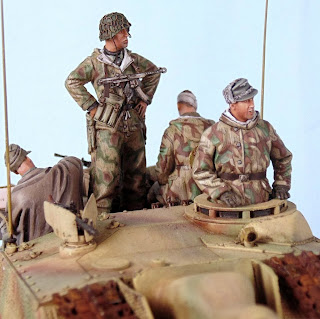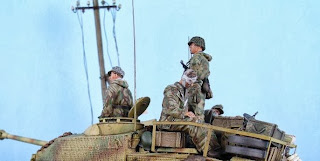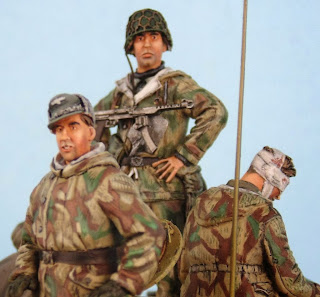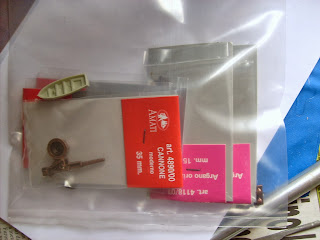L'AFFONDAMENTO DELLA
TRENTONIAN
La richiesta continua ed
urgente di navi scorta ai convogli mercantili trasformò , le poco
adatte al compito classe Flower, nei battelli scorta per antonomasia.
Le Flower class, nascevano
da un progetto per Baleniere della compagnia Smith's Dock, queste
erano state studiate per navigare nelle burrascose e generalmente
instabili acque meridionali.
Dotate di ottime qualità
nautiche, le Flower class avevano di contro scafo molto corto e
piattaforma instabile; di conseguenza con mare molto mosso
imbarcavano acqua provocando il rapido deterioramento psicofisico
degli equipaggi.
Di tali navi ne vennero
costruite 145 esemplari nel Regno Unito ( sua patria d'origine) e 113
in Canada.
La guerra navale tra alleati
e Germania nazista vide l'affondamento di 31 Flower class.
Di norma salvo eccezioni e
piccole varianti le Flower avevano un dislocamento di 940 tonnellate
senza carico sino a 1160 a pieno carico.
La lunghezza era di 62,5
metri per una lunghezza di 10,1 metri e un pescaggio di 3,5 metri.
Spinte da una motrice
alternativa a vapore a triplice espansione di 4 cilindri sull'asse,
le Flowe class potevano così contare su una potenza di 2750 cavalli
vapore; tradotti in una velocità massima di 16 nodi .
Alla velocità di 12 nodi
avevano una autonomia di 6400 chilometri.
L'equipaggio compresi
ufficiali e NCO era di 85 uomini.
L'armamento consisteva in un
cannone da 101,6 millimetri ( principale), un impianto pom-pom o uno
quadrinato da 12,7 millimetri (per la difesa contraerea) e
naturalmente cariche di profondità ( per la guerra antisom).
Il primo Settembre 1943
nella città di Trenton (Ontario-Canada) venne varata la Trentonian
K368 costruita dalla Kingston Shipbuilding Co.ltd. , madrina la
signora Cory moglie del sindaco della città.
Era usanza per finanziare le
spese di guerra , dare il nome delle città alle navi di modo che il
loro destino si legasse ad esse e ne attirasse il finanziamento e il
sostentamento.
Esistendo già una nave
americana di nome USS Trenton, si optò per il nome trentonian.
Gli abitanti di
Trenton-Ontario si affezionarono moltissimo alla nave ,che prima di
salpare ricevette per iniziare un finanziamento di 1.391 dollari e 97
centesimi, 7.065 riviste ,17 libri, 17 giochi e 205 borsoni.
In seguito la Trentonian fu
forse l'unica nave scorta a poter vantare una lavatrice e un
pianoforte, questo sistemato sul ponte visti i problemi di spazio.
Al comando della Trentonian
fu posto il Tenente comandante William Edward Harrison , con lui la
nave partecipò alle operazione preparative per il D-DAY.
Il 30 Gennaio 1945 Harrison
venne sostituito dal Tenente comandante Colin Stinson Glassco.
La Moose Jaw e la Trentonian
spesso operavano insieme nelle scorte ai convogli, il 22 Febbraio del
1945 entrambe le navi dovevano rientrare per far riposare gli
equipaggi, sfiniti dalle operazioni precedenti.
Il comando aveva bisogno di
navi per scortare il convoglio BTC-76 ,composto da 14 navi, rotta
Bristol -Thames.
Sapendo che entrambe le navi
avevano diritto al turno di riposo , venne lasciato decidere ai
Tenenti comandanti.
Naturalmente i due si
offrirono volontari e alla fine si lanciò una moneta, vinse la
Trentinian; quella mattina la mascot ,un randagio, scese dalla nave
senza farvi ritorno.
Alle 13:29 del 22 Febbraio
1945 l'U1004 lancia tre torpedini sul convoglio, si odono tre
esplosioni, la prima dopo 2 minuti, la seconda dopo 11 minuti e 43
secondi e la terza ed ultima dopo 13 minuti e 46 secondi, almeno due
navi affondano, tra queste la K368 l'altro è il mercantile Alexander
Kennedy( ( equipaggio di 19 uomini ebbe un decesso).
A 12 miglia a est di
Falmouth ,Cornovaglia , posizione 50 gradi e 6 primi nord - 4 gradi e
50 primi ovest un siluro colpì di dritta la poppa della Trentonian
,provocando una enorme falla nella sala macchine che ne causò
l'affondamento in 12 minuti.
Dell'equipaggio composto da
97 uomini ,compresi i 5 ufficiali, perirono 6 membri ( 5 marinai e un
ufficiale) , 11 rimasero feriti e il resto venne soccorso, dopo 45
minuti, dalla lancia Britannica Fairmile.
La ferrea disciplina imposta
ai marinai, specialmente riguardo l'obbligo di indossare i giubotti
di salvataggio( oltre 14 membri dell'equipaggio non sapevano nuotare)
certamente contribuì a limitare le perdite.
Fu però la pronta reazione
degli operatori asdic, guidata da Gordon Gibbins ( nonostante l'urto
del siluro gli avesse provocato una ferita alla schiena) , che
mettendo in sicurezza le cariche di profondità evitarono una strage.
Il sommergibile U 1004
classe VII C/41( i sommergibili di questa classe si differenziavano
dalla precedente solo per le maggiori capacità di immersione a più
alte profondità 120/250 m in virtù dello scafo più robusto; ne
vennero costruiti 91 esemplari.), era stato costruito presso i
cantieri Blhom e Voss di Amburgo e varato il 15 Gennaio 1943.
Il 16 Dicembre del 1943 è
posto sotto il comando dell'Oberleutnant Hartmuth Schimmelpfenning e
fino a 31 Luglio 1944 fa parte della trentunesima flottiglia ; mesi
in cui si addestra l'equipaggio.
Dal 1 Agosto 1944 al 31
Ottobre 1944 presta servizio nella settima flottiglia e dal 1
Novembre del 1944 all'8 Maggio 1945 fa parte dell' undicesima.
Nel Gennaio del 1945 diviene
nuovo comandante Rudolf Hinz.
All'attivo due navi
affondate , la Alexander Kennedy , un mercantile da 1,313 Tonnellate
e la Flower class Trentonian K 368 da 980 Tonnellate.
Il 9 Maggio del 1945 l'U1004
nel porto di Bergen in Norvegia si arrende agli alleati.
Fu tra i sommergibili
affondati nell'operazione Deadlight e precisamente il 1 Dicembre del
1945 da fuoco navale.
THE SINKING OF THE TRENTONIAN
The continuous demand of ships for escorting convoys of merchant turned, the ill-suited to the task Flower class, in the escort boat par excellence.
The Flower class, born from a project from company whaling ships Smith's Dock, these were designed to navigate in the stormy southern and generally unstable waters.
Featuring of excellent seaworthiness, the Flower class had the defect of a hull very short and unstable platform; consequently in rough seas embarked water causing the rapid deterioration mental and physical of the crews.
Of these vessels were built it 145 copies in the UK (his homeland) and 113 in Canada.
The naval war between Allied and Germany saw the sinking of 31 Flower class.
As a rule exceptions and small variations of the Flower had a displacement of 940 tonnes unladen weight up to 1160 at full load.
The length was 62.5 meters and a width of 10.1 meters and a draught of 3.5 meters.
Pushed by steam engine of triple expansion of 4-cylinder axis, the Floweclass could therefore count on a power output of 2,750 horsepower; translated into a maximum speed of 16 knots.
At a speed of 12 knots had a range of 6400 kilometers.
The crew, including officers and NCO was 85 men.
Armament consisted of a cannon from 101.6 mm (main), a plant pom-pom or one for barrel by 12.7 mm (for air defense) and of course depth charges (for anti-submarine warfare).
On September 1, 1943 in the city of Trenton (Ontario-Canada) was launched the K368Trentonian built by Kingston Shipbuilding Co.ltd. , Godmother Mrs. Cory wife of the mayorof the city.
It was customary to cover the costs of war, give the name of the city to the ships so that their fate would bind to them and they would attract funding and support.
Since there is already an American ship named USS Trenton, they opted for the nameTrentonian.
The inhabitants of Trenton-Ontario became attached to the ship so much, that the new ship received before sailing to start a loan of $ 1,391 and 97 cents, 7,065 magazines, 17 books, 17games and 205 totes.
Later the Trentonian was perhaps the only escort ship that can boast a washing machine and a piano, this placed on the bridge due to the problems of space.
Trentonian was placed in command of Lieutenant Commander William Edward Harrison,with him, the ship participated in the operation preparative for the D-DAY.
On January 30, 1945 Harrison was replaced by Lieutenant Commander Colin GlasscoStinson.
The Moose Jaw and the Trentonian often worked together in convoys escorts, February 22, 1945, both ships had to return to rest crews, exhausted by previous operations.
The command needed ships to escort the convoy BTC-76, consisting of 14 ships, routeBristol-Thames.
Knowing that both ships had the right to turn off, was left to decide Lieutenantscommanders.
Naturally, the two volunteered and eventually threw a coin, won the Trentinian, that morningthe mascot, a stray, got out of the ship without returning.
At 13:29 on February 22nd, 1945, the U1004 launches three torpedoes at the convoy, are heard three explosions, the first after 2 minutes, the second after 11 minutes and 43 seconds and the third and final after 13 minutes and 46 seconds, at least two ships sink,among them the K368 the other is the merchant Alexander Kennedy ((crew of 19 men had a death).
At 12 miles east of Falmouth, Cornwall, position 50 degrees north and 6/1 - 50/1 and 4 degrees west a torpedo struck the starboard stern of the Trentonian, causing a huge holein the engine room that caused the sinking in 12 minutes .
Crew consists of 97 men, including five officers, were killed 6 members (5 sailors and an officer), 11 were injured and the rest was relief, after 45 minutes, the British Fairmilelaunches.
The iron discipline imposed on the sailors, especially regarding the requirement to wearlife jackets (more than 14 members of the crew could not swim) certainly helped to limit losses.
However, it was the prompt reaction of the operators asdic, led by Gordon Gibbins(despite the impact of the torpedo had caused a wound in the back), that by securing thedepth charges avoided a massacre.
The submarine U 1004 Class VII C/41 (the submarines of this class differed from the previous one only for more diving skills at higher depth 120/250 m under the hull more robust, they were built 91 units.), Was was built at the shipyard Blhom and Voss in Hamburg and launched 15 January 1943.
On December 16, 1943 is placed under the command dell'Oberleutnant HartmuthSchimmelpfenning and up to 31 July 1944 is part of the thirty-first flotilla, months in whichyou train the crew.
Since August 1, 1944 al 31 October 1944 he served in the seventh fleet and from 1November 1944 to 8 May 1945 is part of the 'eleventh.
In January 1945 he became the new commander Rudolf Hinz.
Made two sunken ships, the Alexander Kennedy, a merchant from 1,313 Tons and Flowerclass Trentonian K 368 from 980 Tons.
On May 9, 1945 U1004 in the port of Bergen in Norway surrenders to the Allies.
He was one of the submarines sunk in the operation Deadlight and precisely on December 1, 1945 by naval gunfire.
L'IDEA
Inizialmente desideravo
rappresentare semplicemente un U-BOOT durante l'emersione, ma col
proseguire delle ricerche sul web piano piano si insinuava l'idea di
rappresentare( se pur filtrato dalle necessità modellistiche ) un
evento storico.
Così ho raccolto
informazioni sulla Trentonian per dare vita ad un diorama, il cui
vero protagonista è in realtà l'U-BOOT.
L'aver scoperto l'esistenza
di figurini in 1/144 (prodotti dalla NorthStarmodel ditta Ucraina) mi
ha spinto a inserire alcuni figurini sul sottomarino e soprattutto le
scialuppe con i naufraghi.
L'intera scena vuole essere
una rappresentazione generale senza velleità di ricostruzione fedele
dei fatti.
La stessa Trentonian
(autocostruita) è più un simulacro che una fedele riproduzione del
battello, il tutto fa da cornice al vero protagonista della scena .
THE IDEA
Initially I wanted to represent simply a U-BOOT during emergence, but the continued operation of the web searches slowly crept the idea of representing (albeit filtered by the requirements modeling) a historical event.
So I gathered information on the Trentonian in order to create a diorama, whose realprotagonist is actually the U-BOOT.
Having discovered the existence of figures in 1/144 (produced by the companyNorthStarmodel Ukraine) has prompted me to put some figures on the submarine and especially the lifeboats with survivors.
The whole scene is intended as a general representation without ambition to faithful reconstruction of the facts.
The same Trentonian (self-built) is a simulacrum that a faithful reproduction of the boat, allframed by the real protagonist of the scene.
LA REALIZZAZIONE
Il Deutsches German
Submarine U-BOOT Type VII C/41 Atlantic Version 1/144 codice 05100, è
un kit ben fatto, facile e veloce da assemblare; un divertimento
assicurato.
Una volta finito
l'assemblaggio ho usato per la verniciatura ad aerografo differenti
marche di vernici.
Per lo scafo inferiore ho
mescolato un Dark Gray Blue vallejo air 71054 con un 71073 Black in
seguito schiarito con una velatura di Pale gray Blue .
La parte sopra la linea di
galleggiamento è un misto di acrilici Maimeri, Pebeo e qualche
goccia di Vallejo air Light Sea Blu 089.
Le due parti sono state
mascherate con semplice nastro di carta da carpentiere.
Il ponte è stato
aerografato con Panzer Gray Tamiya e le scrostature ottenute a
pennello con vallejo air wood 71077.
Tutto il kit ha subito
lavaggi mirati con colore ad olio Winsor&Newton Vandyke con una
pinta di Terra di kassel( Maimeri).
I filtri sono stati
applicati con colori differenti, già a ricreare colature e usura,
per le parti più rugginose ho usato ruggine vera mescolata a Burnt
Sienna W&N.
Con drybrush rosa e giallo
napoli ho ripreso luci e fatto affiorare i particolari.
Per ricreare un simulacro di
Flower class sono partito da un battelo già montato recuperato in un
mercatino a pochi euro.
Segata la prua , l'ho
rivestita con biglietti usati del bus a loro volta rivestiti di un
miscuglio di colla vinilica e stucco universale.
Alla fine vi ho steso una
sfoglia di stucco bi-componente ( Magic sculpt+ green stuff).
Per il ponte ho tagliato
strisce di cartoncino dei biglietti del bus , con i quali ho
ricostruito anche la corazzatura del cannone.
Tutto il resto ( catene,
ormeggi , cannone , ecc) sono referenze AMATI e qualche pezzetto di
plasticard.
Le ancore sono state
disegnate e ritagliate dalla mia ragazza Elena ( io sono negato per
queste due cose).
La verniciatura è stata
simile a quella dell'U-BOOT specialmente l'invecchiamento, mentre le
macchie nere sono tate riprodotte con vallejo air Black 71073 e la
parte bianca con Italeri Flat White 4769AP con una goccia di Vallejo
Air Light Sea Blue 089.
Sullo scafo una base di Life
Color UA 717 con differenti lavaggi marroni a olio.
Ia scritta K368 l'ho
ottenuta con vecchie Letraset trasferibili.
I figurini in resina sono
stati dipinti ad acrilico subendo piccoli lavaggi ad olio e poi un
drybrush, per le scialuppe( Amati) fresatura per renderle più
profonde e pittura con acrilici e oli.
La base è stata
autocostruita a partire da tavole di legno di scarsa qualità ,
misura 56cm x33cm.
Per il mare ho ricreato le
onde con polistirolo rivestito di carta da giornale imbevuta in acqua
e vinavil ; una volta aciugato il tutto vi ho applicato carta
stagnola dipinta con un blue di prussia ad olio della pebeo.
Qualche giorno dopo ho preso
del semplice silicone trasparente( reso più lavorabile con della
nitro) e l'ho colorato con poche gocce di Vallejo Air Blue 71004.
Dopo l'applicazione l'ho
lavorato con un vecchio pennello, nelle parti di contatto dell'U-Boot
invece ho versato la E-Z Water della Woodland Scenic colorata con
pigmenti in polvere blu.
La schiuma è un miscuglio
di Bianco Italeri, colla vinilica ,acqua e bicarbonato.
I getti di scarico delle
camere stagne, sono ricavati da pezzetti di plastica trasparenti
ritagliati dai coperchi delle confezioni degli yogurt; su cui è
stata applicata la schiuma.
La targhetta è di carta
spagna su cui ho applicato letraset trasferibili , ricoprendo il
tutto con nastro pacchi trasparente.
THE REALIZATION
The Deutsches German Submarine U-BOOT Type VII C/41 Atlantic Version 1/144 code 05100, is a kit well done, easy and fast to assemble, a sure fun.
Once finished the assembly I used to paint with an airbrush different brands of paint.
For the lower hull I mixed a Dark Blue Gray 71054 vallejo air with a 71073 Black subsequently cleared with gray Pale Blue.
The part above the water line is a mixture of acrylic Maimeri, Pebeo and a few drops of Vallejo air Light Sea Blue 089.
The two sides have been masked with simple paper tape .
The bridge was airbrushed with Tamiya Panzer Gray and chiping at brush with vallejo wood 71077.
The entire kit has been targeted washes with Winsor & Newton oil color Vandyke with a hint of earth kassel (Maimeri).
The filters have been applied with different colors, recreating already sagging and usury, I used real rust mixed with Burnt Sienna W & N.
Drybrush with pink and yellow lights naples I started and brought to the surface details.
To re-create a simulacrum of Flower class I left a BOAT already mounted recovered in a flea market a few euro.
Cut the bow, I used bus tickets coated in turn coated with a mixture of white glue and universal putty.
At the end I laid a sheet of putty (Magic sculpt + green stuff).
For the bridge I cut strips of bus tickets, with whom I also rebuilt the armor of the gun.
Everything else (chains, moorings, cannon, etc.) are AMATI MODELLISMO references and a few pieces of plasticard.
The anchors were designed and cut by my girlfriend Elena (I am denied for these two things).
The painting was similar to the U-BOOT especially aging, while the black spots were produced with air vallejo 71073 Black and white part with Italeri Flat White 4769AP with a drop of Vallejo Air Light Sea Blue 089.
On the hull of a base Life Color UA 717 with different washes brown oil.
Ia K368 I have obtained written with old Letraset transferable.
The resin figures were painted with acrylic washes undergoing minor oil and then adrybrush for the boats (Amati) milling to make them deeper and painting with acrylics and oils.
The base has been self-made from planks of wood of poor quality, measuring 56cmx33cm.
To the sea I recreated the waves with polystyrene coated newsprint soaked in water andPVA glue, once dried it all I applied aluminum foil painted with a blue Prussian oil forPebeo.
A few days later I took the simple transparent silicon (made more workable with the nitro)and I colored with a few drops of Vallejo Air Blue 71004.
After its application, I worked with an old paintbrush, in the contact parts of U-Boot insteadI poured the EZ Water of Woodland Scenic colored with pigment powder blue.
The foam is a mixture of Italeri White, white glue, water and baking soda.
The jets discharge watertight chambers, are made from pieces of transparent plastic lidscut from the packaging of yogurt, on which has been applied to the foam.
The plate is brass plate on which I applied letraset transferable, covering it all withtransparent tape packs.










.jpg)



.jpg)


.jpg)

.jpg)



.jpg)







































































